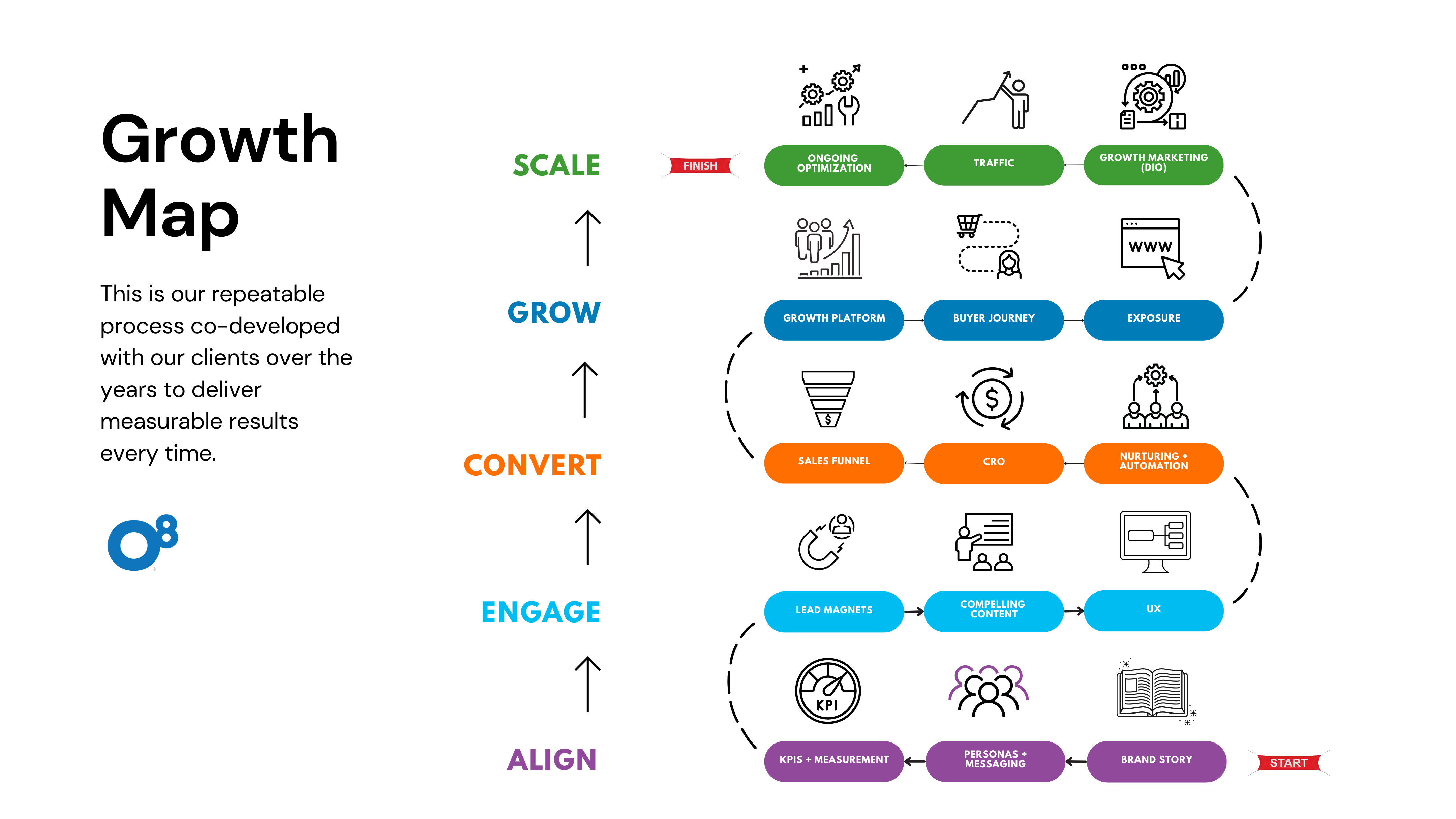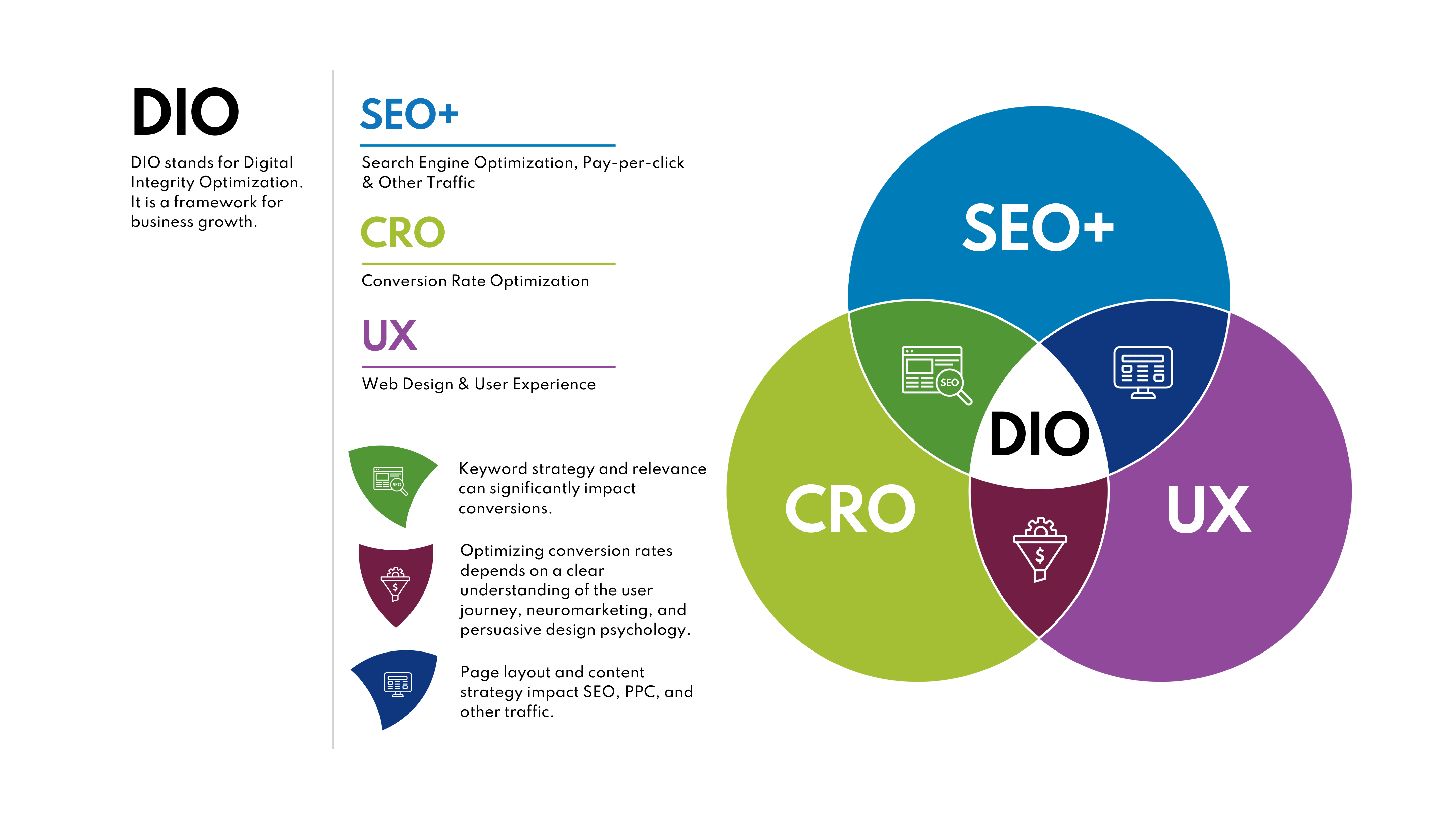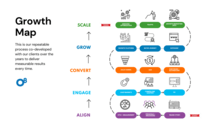Growth Marketing: What is It? What Are The Benefits?

- Use growth marketing to engage the entire customer lifecycle from acquisition to retention for sustainable business growth.
- Implement the AARRR framework (Acquisition, Activation, Retention, Referral, Revenue) to optimize the customer journey and improve lifetime customer value.
- Leverage data and analytics to drive decision-making and continuous campaign optimization through tools like Google Analytics and HubSpot.
- Utilize low-cost growth hacking techniques like social media and influencer partnerships for rapid customer acquisition in startups and SaaS.
- Invest in a dedicated growth marketing team and employ iterative testing and feedback loops for ongoing marketing effectiveness and customer satisfaction.
As an expert with over a decade of experience leading a digital marketing agency, I've seen firsthand the significant impact growth marketing can have on a business.
Growth marketing isn't just another buzzword; it's a data-driven strategy designed to deliver measurable growth on-demand. At O8, we specialize in empowering marketing and sales teams to achieve their goals through transparent, agile, and technically-savvy tactics.
In today's fast-paced digital landscape, simply having a marketing plan isn't enough. Businesses face numerous challenges, such as:
- Struggling to engage and retain customers.
- Navigating a chaotic digital ecosystem.
- Identifying the right growth opportunities.
With these obstacles in mind, this blog post aims to provide actionable insights into growth marketing strategies that can drive sales and enhance customer engagement.
According to research, companies that prioritize growth marketing experience an average revenue increase of 8% or more compared to those that don’t.
This statistic underscores the importance of adopting a growth-oriented approach to marketing. Let's explore how you can harness the power of growth marketing to propel your business forward.
What is Growth Marketing?
Growth marketing is a comprehensive, data-driven approach designed to achieve sustainable business growth. Unlike traditional marketing, which often focuses on short-term gains and isolated campaigns, growth marketing encompasses the entire customer lifecycle, from acquisition to retention and beyond.
Components of Growth Marketing
"Pirate metrics" or AARRR, is a framework used in growth marketing to measure and optimize the customer journey. Coined by Dave McClure, this model breaks down the journey into five stages: Acquisition, Activation, Retention, Referral, and Revenue.
1. Acquisition: This stage focuses on attracting new users through various channels such as search engine optimization (SEO), content marketing, and social media. It's crucial to understand your target audience and develop messaging that resonates with their needs and pain points.
2. Activation: Once prospects have shown interest, the goal is to engage them meaningfully. This could involve personalized email sequences or A/B testing of landing pages to determine the most effective messaging and design elements.
3. Retention: Keeping existing customers engaged is often more cost-effective than acquiring new ones. Growth marketing employs tactics like targeted email campaigns and customer loyalty programs to ensure users continue to find value in your offerings.
4. Referral: Happy customers are likely to refer others. Implementing referral programs can help create a viral loop, where existing users bring in new ones, reducing customer acquisition costs.
5. Revenue: The final component focuses on monetizing the user base through upselling, cross-selling, and optimizing the sales funnel to increase lifetime customer value.
What is a Growth Marketing Agency?
Think of a regular marketing agency as helping you build a single marketing campaign. A growth marketing agency does more than that – they're like detectives for your business's growth. Growth marketing agencies look at everything you do to attract and keep customers, searching for hidden ways to make things work even better. They don't just guess; they try small, quick experiments and see what actually makes a difference. If something works, they do more of it. If it doesn't, they quickly try something else.
So, a growth agency is a team that helps businesses grow faster and smarter. They don't just focus on one thing like ads or social media. Instead, they look at the whole picture – from how people first find you to why they stick around. They use data and smart tools to find the most effective ways to bring in new customers, keep them happy, and make your business thrive over the long term.
Our Growth Marketing Framework
At O8, we use a repeatable process and roadmap for growth marketing. We employ various tactics to align, engage, convert, grow, and scale your business.

Understanding the growth marketing framework is essential for implementing strategies that drive sustainable growth. This framework typically comprises five stages: Align, Engage, Convert, Grow, and Scale. Each stage plays a critical role in ensuring that marketing efforts are targeted, effective, and continually optimized.
Align
The first stage, Align, starts with defining your brand story. This involves articulating your company's origin, mission, and values to evoke emotion and build trust with your audience. Developing detailed personas based on your ideal customers ensures that your messaging speaks directly to their pain points. Identifying key performance indicators (KPIs) is also fundamental at this stage, as these metrics will track and measure the success of your marketing campaigns.
For example, using tools like HubSpot can help you create and track these personas and KPIs seamlessly. A well-aligned growth marketing strategy will set the tone for all subsequent stages.
Engage
Engaging your target audience involves developing lead magnets and compelling content that answer customer questions and demonstrate your brand's authority. This content not only generates organic traffic but also encourages user interaction. Optimizing the user experience (UX) by reducing friction in the buyer’s journey is crucial.
Consider implementing UX design best practices to enhance engagement. Engaging effectively requires a deep understanding of your customers' needs and motivations.
Convert
During the Convert stage, focus on nurturing and automating customer interactions to gather feedback and strengthen relationships. Conversion rate optimization (CRO) tactics can reveal which parts of your digital ecosystem need adjustments to increase return on investment (ROI). Analyzing the bottom of the sales funnel helps understand where prospects are dropping out, allowing you to convert them more effectively.
Utilizing tools A/B testing tools can help identify what works best in converting leads into customers. This stage emphasizes turning interest into tangible actions.
Grow
The Grow stage is about creating specific initiatives designed to increase revenue and profit. Execute these initiatives at every stage of the buyer’s journey and evaluate your internal capabilities for handling new business. This is where your brand begins to gain more exposure and expand its customer base.
For instance, growth platforms like HubSpot facilitate the seamless execution of growth initiatives, providing you with the necessary tools to scale effectively.
Scale
When your brand is poised to scale, our Digital Integrity Optimization (DIO™️) framework comes into play. This framework includes CRO, web design, UX, search engine optimization (SEO), pay-per-click (PPC), and other traffic-driving tactics. Prioritizing problems and opportunities by business impact ensures ongoing optimization, thus continuing to boost your ROI. You can learn more about this approach in our discussion on results-driven marketing.

An excellent example of this framework in action is the case study of GenoPalate, where we utilized comprehensive strategies to double their conversion rates.
Growth Marketing vs. Other Types of Marketing
In order to better understand growth marketing, it's often helpful to compare it to other types of marketing.
Differentiating Growth Marketing from Traditional Marketing
Traditional marketing strategies often rely on tried-and-true methods like advertisements, email campaigns, and promotions. While these tactics can be effective, they frequently lack the agility and adaptability required in today's fast-paced digital environment. Growth marketing, on the other hand, emphasizes continuous optimization and experimentation, leveraging data to drive decisions and tailor strategies to specific audience segments.
Growth Marketing vs Digital Marketing
It's essential to clarify the distinction between growth marketing and digital marketing. While digital marketing is an umbrella term encompassing all online marketing activities, growth marketing is a specialized subset focused on achieving rapid, scalable growth. Growth marketing leans heavily on data analytics, customer feedback, and iterative testing to refine strategies continually.
Another key distinction is the difference between growth marketing and product marketing. While growth marketing is focused on driving overall business growth, product marketing is more concerned with the product itself, such as its positioning, messaging, and pricing.
Businesses that implement growth marketing strategies often experience improved customer retention rates. Research shows that increasing customer retention rates by just 5% can increase profits by 25% to 95%.
This underscores the effectiveness of a holistic, data-driven approach in achieving sustainable growth.
For businesses seeking to navigate the complexities of digital marketing, understanding and implementing growth marketing strategies can be a game-changer. It empowers marketing and sales teams to be more agile, responsive, and ultimately successful in driving long-term growth.
A Word About Growth Hacking
You may have also heard the term “growth hacking” in conversations about growth marketing. Early-stage startups developed growth hacking to grow fast on a small budget. The goal of growth hacking is to achieve product/market fit quickly.
Growth marketing picks up where growth hacking leaves off. It concentrates on brand growth after your business attains product/market fit. Growth hacking drives high-speed growth; growth marketing fosters sustainable growth.
Related Comparisons:
Key Strategies in Growth Marketing
Growth marketing employs a variety of strategies designed to drive sustainable growth. These strategies are data-driven, customer-centric, and focused on long-term success. Let's dive into some of the most effective growth marketing strategies, providing actionable advice and real-world examples to guide you.
Search Engine Optimization (SEO)
SEO is a cornerstone of any successful growth marketing strategy. It involves optimizing your website and content to rank higher in search engine results, thereby increasing organic traffic. Effective SEO requires a deep understanding of your target audience’s search behavior and optimizing your site accordingly.
For instance, our SEO services at O8 have helped numerous clients improve their search rankings, driving more qualified traffic and increasing conversions. Employing keyword research, on-page optimization, and link-building strategies can significantly enhance your site's visibility.
Content Marketing
Content marketing focuses on creating valuable, relevant content to attract and engage your target audience. This strategy not only boosts SEO but also positions your brand as an authority in your industry. Crafting high-quality blog posts, whitepapers, and videos can address your audience’s pain points and offer solutions.
For example, our guide on building a StoryBrand provides insights on creating compelling brand narratives that resonate with your audience.
Email Marketing
Email marketing remains one of the most effective channels for growth marketing. Personalized email campaigns can nurture leads and drive conversions. Implementing targeted email sequences based on user behavior and preferences ensures that your messaging is relevant and engaging.
Using our expertise in email marketing, you can create campaigns that foster customer relationships and drive repeat business. Segmenting your audience and A/B testing different email formats can optimize engagement rates.
Social Media
Social media platforms offer immense potential for growth marketing. Leveraging these platforms to create engaging content and interact with your audience can boost brand awareness and drive traffic. Paid social media campaigns can further amplify your reach and target specific audience segments.
Our comprehensive social media services can help you create and execute effective social media strategies that align with your growth objectives.
A/B Testing
A/B testing, or split testing, involves comparing two versions of a webpage, email, or other marketing assets to determine which performs better. This strategy is crucial for optimizing conversion rates and ensuring your marketing efforts are as effective as possible.
For example, by A/B testing different elements of your landing pages, you can identify which designs and messages resonate best with your audience, leading to higher conversion rates. Our blog post on optimizing your conversion rates provides detailed tips on how to implement effective A/B testing.
Referral Programs
Referral programs incentivize your existing customers to refer new customers. This strategy leverages the power of word-of-mouth marketing and can significantly reduce customer acquisition costs. Offering rewards or discounts for successful referrals can motivate your customers to spread the word about your brand.
Implementing a referral program can create a viral loop, where new customers continue to bring in more new customers, fostering sustainable growth.
Real-World Applications
Growth marketing strategies are best understood through real-world applications. By examining successful case studies and practical examples, you can see how these strategies can be implemented effectively to drive business growth. Here are a few notable examples and insights.
Case Study: GenoPalate
A prime example of successful growth marketing is our work with GenoPalate, a company that provides personalized nutrition advice based on DNA analysis. GenoPalate faced challenges in optimizing their conversion rates and enhancing customer engagement. By implementing a comprehensive conversion rate optimization (CRO) strategy, we were able to double their conversion rates within a short period.
Our approach involved detailed analyses of user behavior, A/B testing various landing page designs, and refining the messaging to better address customer needs and pain points. You can read more about this success story in our GenoPalate case study.
Practical Tips and Strategies
1. Personalization: Personalization is a powerful tool in growth marketing. Tailoring content and marketing messages to individual user preferences can significantly enhance engagement and conversion rates. Use customer data and advanced analytics to create personalized experiences across all touchpoints.
2. Data-Driven Decision Making: Growth marketing relies heavily on data. Utilize tools like Google Analytics, CRM systems, and marketing automation platforms to gather and analyze data. This approach enables you to make informed decisions and continuously refine your strategies based on real-world results.
3. Customer Feedback: Actively seeking and incorporating customer feedback can provide valuable insights into what works and what doesn’t. Use surveys, social media listening, and direct feedback mechanisms to understand customer sentiments and improve your offerings.
4. Continuous Optimization: Growth marketing is an ongoing process. Regularly review your strategies, conduct A/B testing, and make necessary adjustments. This iterative approach ensures that your marketing efforts remain relevant and effective.
Challenges and Solutions
Challenge: One of the common challenges in growth marketing is aligning different departments and ensuring seamless communication. Misalignment can lead to inconsistent messaging and missed opportunities.
Solution: Implement a unified growth marketing framework that includes regular cross-departmental meetings and clearly defined goals. Tools like HubSpot can facilitate better collaboration and streamline communication.
Challenge: Another challenge is handling the vast amount of data generated by growth marketing activities. Analyzing this data to extract actionable insights can be overwhelming.
Solution: Invest in data analytics tools and ensure your team is trained to use them effectively. Solutions like Google Analytics and HubSpot’s analytics provide comprehensive data analysis capabilities that can simplify this process.
Challenge: Retaining customers is often more challenging than acquiring them. Keeping customers engaged and loyal requires ongoing effort and innovative strategies.
Solution: Develop robust retention strategies such as loyalty programs, personalized email campaigns, and exclusive offers for existing customers. Focus on providing exceptional customer service and addressing any issues promptly to foster long-term loyalty.
The Role of Data and Metrics
In growth marketing, data is not just a byproduct of your activities—it's the backbone of your strategy. Growth marketers use metrics and data-driven insights to make informed decisions, optimize campaigns, and achieve sustainable growth. Here's how data and metrics play a crucial role in growth marketing and how you can leverage them to your advantage.
Importance of Data-Driven Decision Making
Data-driven decision making involves using analytics and metrics to guide your marketing strategies rather than relying on intuition or guesswork. This approach helps in identifying what's working and what's not, allowing for continuous optimization.
For instance, tools like Google Analytics and HubSpot provide comprehensive data on user behavior, traffic sources, and conversion rates. By analyzing this data, you can uncover patterns and trends that inform your marketing strategies.
According to WordStream, companies that adopt data-driven marketing are six times more likely to achieve profitability year-over-year.
Key Metrics to Track
Monitoring the right metrics is essential for evaluating the effectiveness of your growth marketing strategies. Here are some key metrics to focus on:
1. Customer Acquisition Cost (CAC): This metric calculates the total cost of acquiring a new customer. Keeping CAC low while ensuring high-quality leads is crucial for sustainable growth.
2. Customer Lifetime Value (CLV): CLV measures the total revenue a business can expect from a single customer account. A higher CLV indicates better customer retention and the effectiveness of your upselling and cross-selling strategies.
3. Conversion Rate: This metric tracks the percentage of visitors who complete a desired action, such as making a purchase or filling out a form. Higher conversion rates indicate that your marketing efforts are successfully driving desired actions.
4. Retention Rate: Customer retention rate measures the percentage of customers who continue to do business with you over a specified period. A high retention rate is a strong indicator of customer satisfaction and loyalty.
5. Net Promoter Score (NPS): NPS gauges customer satisfaction and loyalty by asking customers how likely they are to recommend your business to others. A higher NPS indicates strong customer advocacy.
For practical guidance on tracking these metrics, explore our insights on digital marketing dashboards and data visualization tools.
Implementing A/B Testing
A/B testing, or split testing, is a critical practice for optimizing various aspects of your marketing campaigns, from landing pages to email sequences. By testing two versions of a webpage or email against each other, you can determine which one performs better based on specific metrics.
Our detailed guide on creating great landing pages covers practical tips on implementing effective A/B tests. This iterative approach ensures that your marketing assets are continuously optimized for better performance.
The Role of Automation
Automation tools play a significant role in growth marketing by streamlining repetitive tasks and allowing marketers to focus on strategic activities. Tools like HubSpot offer robust automation features that can manage email campaigns, social media posts, and lead nurturing processes.
By automating these tasks, you can ensure consistent and timely communication with your audience, ultimately driving better engagement and conversions.
How to Get Started with Growth Marketing
Embarking on a growth marketing journey can seem daunting, but with the right strategies and tools, you can set a solid foundation for sustainable growth. Here are actionable steps to guide you through the process.
Understand Your Customer Journey
Before you begin, it's crucial to map out your customer journey. Understanding each touchpoint—from awareness to purchase and beyond—allows you to identify opportunities for optimization. Analyze how potential customers interact with your brand and where they encounter friction.
Creating detailed personas based on customer data can help tailor your messaging and strategies to better meet their needs. Tools like HubSpot can assist in tracking and analyzing customer interactions throughout the journey.
Build Your Growth Marketing Team
Having a dedicated growth marketing team is vital for executing effective campaigns. This team should include a mix of skills such as data analysis, content creation, SEO, and social media management. A well-rounded team can navigate various marketing channels and implement targeted growth strategies.
At O8, we emphasize the importance of a collaborative team structure. For insights on building an ideal team, check out our blog on optimizing your marketing team’s performance.
Develop a Comprehensive Growth Strategy
A comprehensive business growth strategy outlines your long-term goals and the steps you will take to achieve them. This includes defining your target audience, setting measurable objectives, and identifying the most effective marketing channels.
For startups and SaaS companies, in particular, growth hacking techniques can provide quick wins. These techniques involve creative, low-cost strategies to acquire and retain customers rapidly. For example, leveraging social media and influencer partnerships can boost brand awareness and drive traffic.
An effective growth strategy also involves constant iteration and optimization. Regularly review your marketing funnel to identify areas for improvement and make data-driven adjustments.
Launch and Optimize Growth Marketing Campaigns
Once your strategy is in place, it's time to launch your growth marketing campaigns. These campaigns should focus on driving engagement, conversion, and retention. Utilize a mix of tactics such as content marketing, email marketing, and social media to reach your target audience.
For e-commerce businesses, optimizing product pages and checkout processes can significantly impact conversion rates. Similarly, targeted email campaigns can nurture leads and convert subscribers into loyal customers.
Our blog on growth marketing versus performance marketing delves deeper into these tactics, offering actionable insights for your campaigns.
Track Metrics and Refine Your Approach
Continuously tracking key metrics is essential for understanding the effectiveness of your marketing efforts. Monitor metrics such as customer acquisition cost, customer lifetime value, and churn rate to gauge performance. Based on these insights, refine your approach to enhance results.
Automation tools can help manage and analyze data, providing real-time insights that inform your strategy. For instance, using HubSpot’s analytics can streamline this process, allowing your team to focus on strategic initiatives.
Ready to elevate your marketing strategy?
Our expert team can help you develop a comprehensive plan that aligns with your business goals
Product Marketing and Growth Marketing
Product marketing plays a crucial role in the broader context of growth marketing. While growth marketing focuses on acquiring and retaining customers, product marketing zeroes in on positioning your product effectively in the market. Together, they create a powerful synergy that drives sustainable growth.
Defining Product Marketing
Product marketing involves understanding the market landscape, identifying your target audience, and crafting compelling messaging that highlights your product's unique value proposition. This discipline ensures that your product meets market needs and is positioned to attract and retain customers.
At its core, product marketing answers critical questions such as:
- Who is our target audience?
- What problems does our product solve?
- How does our product stand out from the competition?
For a deeper dive into crafting effective product messaging, you can explore our insights on building a StoryBrand.
Integrating Product Marketing with Growth Marketing
In the context of growth marketing, product marketing acts as a foundational element that informs your overall growth strategy. Here’s how:
1. Aligning Messaging Across Channels: Effective product marketing ensures that your messaging is consistent across all marketing channels. This alignment helps in building a cohesive brand image that resonates with your audience at every touchpoint along the customer journey.
2. Enhancing Customer Experience: By clearly communicating the value of your product, product marketing helps in setting the right expectations. This clarity enhances the overall customer experience, leading to higher satisfaction and retention rates.
3. Supporting Sales Efforts: Product marketing provides sales teams with the tools and insights they need to effectively communicate the product's value to potential customers. This support is crucial in converting leads into paying customers.
4. Feedback Loop: Growth marketing campaigns generate valuable customer data and feedback. Product marketing uses this feedback to refine product features and messaging, creating a continuous improvement loop.
For instance, our case study on GenoPalate demonstrates how aligning product marketing with growth marketing can significantly boost conversion rates and customer engagement.
Pricing Strategies in Growth Marketing
Pricing strategies are a vital component of both product and growth marketing. The right pricing strategy can attract new customers, retain existing ones, and maximize profits.
1. Value-Based Pricing: This strategy involves setting prices based on the perceived value of your product to the customer, rather than cost. By understanding what customers are willing to pay and why, you can optimize pricing to reflect the product’s value accurately.
2. Penetration Pricing: This strategy sets a low price initially to attract a large number of customers quickly. Once a significant market share is captured, the price can be gradually increased. This approach is particularly effective for startups looking to establish a foothold in the market.
3. Premium Pricing: Premium pricing positions your product as a high-value offering, often accompanied by high-quality features and exceptional customer service. This strategy can attract a niche market willing to pay a premium for superior value.
4. Dynamic Pricing: Dynamic pricing involves adjusting prices based on market demand, competition, and other external factors. This flexible approach can help maximize revenue and stay competitive in a fluctuating market.
5. Freemium Model: Common in the SaaS industry, the freemium model offers a basic product version for free while charging for premium features. This strategy can help attract a large user base, many of whom may eventually convert to paying customers for added value.
For more insights on optimizing pricing strategies, you can explore our comprehensive guide on marketing strategy.
Implementing Pricing Strategies
To effectively implement pricing strategies, consider the following steps:
- Market Research: Conduct thorough market research to understand customer preferences, competitive pricing, and market demand.
- Customer Segmentation: Segment your audience based on willingness to pay and tailor your pricing strategies accordingly.
- A/B Testing: Test different pricing models to identify the most effective strategy for your target audience.
- Monitor and Adjust: Continuously monitor market conditions and customer feedback to adjust pricing strategies as needed.
By integrating product marketing and strategic pricing into your growth marketing efforts, you can create a compelling value proposition that attracts and retains customers, driving long-term growth.
Growth Marketing Roles
What Does a Growth Marketing Manager Do?
A growth marketing manager is a specialized growth marketer who takes a step-by-step approach with every channel, source, and funnel stage to find growth opportunities. They use data to identify touchpoints where prospects are leaving at the highest rate and which metrics they need to improve.
To become a growth marketing specialist, it's essential to have a strong foundation in marketing fundamentals, data analytics, and digital marketing channels.
To carry out these initiatives, a growth marketing manager develops clear hypotheses, defines experiments, and tests assumptions. These actions ensure that the results are efficient and scalable. A growth marketing manager also works with marketing, operations, product management, analytics, design, and engineering to gather different viewpoints.
Growth marketers are crucial for driving sustainable growth by combining data-driven insights, strategic planning, and continuous optimization.
Navigating Your Growth Marketing Journey
Embarking on a growth marketing journey requires a well-rounded approach that integrates data-driven insights, robust strategies, and continuous optimization. By understanding and implementing the principles of growth marketing, you can achieve sustainable business growth and foster long-term customer loyalty.
Key Takeaways
1. Comprehensive Framework: Utilize a comprehensive growth marketing framework that includes stages such as Align, Engage, Convert, Grow, and Scale. This structured approach ensures that your marketing efforts are targeted, effective, and continuously optimized.
2. Data and Metrics: Leverage data analytics tools to monitor key metrics such as customer acquisition cost, customer lifetime value, and churn rate. Data-driven decision making is essential for refining your strategies and maximizing ROI. For more insights on leveraging data, explore our digital marketing strategy articles.
3. Real-World Applications: Drawing lessons from real-world applications and case studies, such as our success with GenoPalate, can provide valuable guidance. These examples highlight the effectiveness of aligning product marketing with growth strategies.
4. Continuous Optimization: Growth marketing is not a one-time effort but a continuous process. Regularly review and optimize your campaigns through A/B testing, customer feedback, and iterative improvements. Our blog on creating great landing pages offers practical tips for ongoing optimization.
5. Integrating Product Marketing: Effective product marketing is integral to growth marketing. Positioning your product correctly and setting the right pricing strategies can drive both acquisition and retention. Learn more about product marketing in our comprehensive guide.
Final Thoughts
Growth marketing requires a strategic, data-driven approach that spans the entire customer journey. Whether you're a startup looking to establish a foothold or an established business aiming to scale, the principles outlined in this guide can help you navigate the complexities of growth marketing.
By integrating robust product marketing and strategic pricing, you can create a compelling value proposition that attracts, converts, and retains customers. Remember, the key to successful growth marketing lies in continuous learning, adaptation, and optimization. For more insights and strategies, explore our extensive range of digital marketing services.









